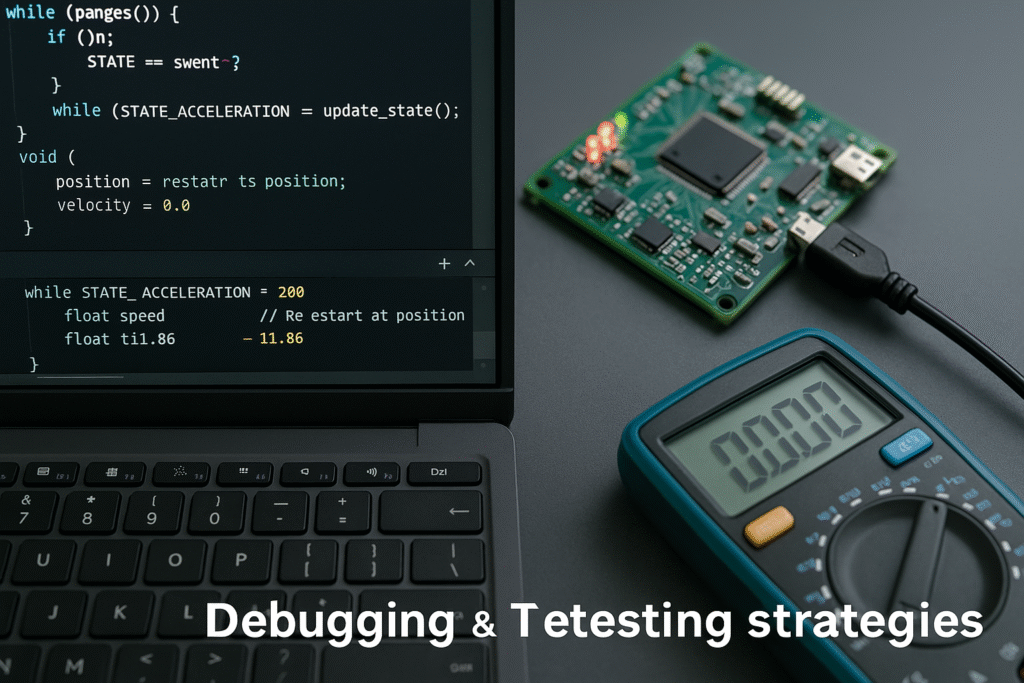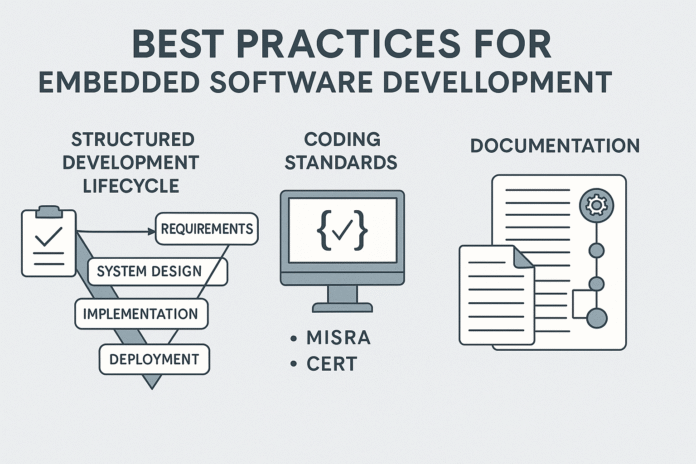Embedded systems are the backbone of modern technology, powering everything from consumer electronics and automobiles to medical devices and aerospace applications. To deliver reliable, efficient, and scalable embedded products, engineers must adopt disciplined workflows, robust tools, and strict coding methodologies. Implementing best practices for embedded software development not only improves code quality but also enhances long-term maintainability, safety, and performance. Combined with strong pcb design, these practices ensure seamless integration between hardware and software in embedded systems. This article provides an in-depth look at the essential best practices every embedded engineer should follow.
Structured Development Lifecycle
A structured development lifecycle ensures projects move from concept to deployment systematically. Popular models include the V-Model, Agile for embedded, and hybrid approaches. Key phases:
- Requirements analysis: Defining functional and non-functional requirements early avoids costly redesigns.
- System design: Partitioning between hardware and software ensures optimal resource use.
- Implementation: Writing code with adherence to standards.
- Verification and validation: Testing functionality against requirements.
- Deployment and maintenance: Supporting updates and bug fixes after release.
Without a disciplined lifecycle, embedded projects risk delays, cost overruns, and failures in mission-critical environments.
Using Version-Control Systems (Git, etc.)
Version control is indispensable for collaborative development.
- Git: Industry standard for embedded and general software.
- Benefits: Tracks changes, manages branches, supports distributed teams.
- Integration: Works seamlessly with CI/CD pipelines for automated builds.
Other tools like Subversion (SVN) and Perforce are used in legacy systems and large enterprises. Choosing the right system ensures traceability and rollback capability, both vital in embedded projects where safety and reliability matter.
Coding Standards and Documentation
Coding Standards
Strict adherence to coding standards reduces bugs and improves readability. Commonly adopted standards include:
- MISRA C: Widely used in automotive and safety-critical applications.
- CERT C: Focuses on security guidelines.
- Custom corporate standards: Tailored to specific project requirements.
Documentation
Good documentation ensures maintainability. Essential elements include:
- Clear function headers.
- State diagrams for real-time systems.
- Hardware/software interaction notes.
Together, standards and documentation provide long-term clarity, even as teams and project ownership change.

Debugging and Testing Strategies
Testing in embedded software development requires addressing both hardware and software constraints.
Unit Testing
- Tools: Ceedling, Unity, and Google Test.
- Ensures individual modules behave as expected.
Integration Testing
- Verifies how modules interact with each other and hardware.
- Uses test harnesses to simulate hardware conditions.
Hardware-in-the-Loop (HIL) Testing
- Essential for automotive, aerospace, and industrial systems.
- Tests control algorithms with real hardware inputs.
Debugging Tools
- JTAG/SWD: Allow step-by-step execution and register inspection.
- Serial debugging: Provides insights into runtime behavior.
- Trace analyzers: Track real-time operating system (RTOS) scheduling and event timing.
Effective debugging and testing strategies prevent errors from reaching the field and reduce costly recalls.
Continuous Integration and Automated Testing
Continuous Integration (CI) is increasingly being adopted in embedded projects.
- Concept: Every code change is automatically built and tested.
- Tools: Jenkins, GitLab CI, Buildbot.
- Benefits: Early bug detection, reduced integration risks, improved code quality.
Automated testing frameworks simulate multiple environments, run regression tests, and verify compliance. This is vital for embedded projects where reliability and safety are non-negotiable.
Importance of Security in Embedded Systems
Security cannot be an afterthought. With embedded devices connected to IoT networks, vulnerabilities can have widespread impact. Best practices include:
- Secure boot processes.
- Encryption of communication channels.
- Regular patch management.
- Static code analysis to detect potential vulnerabilities.
Security must be integrated from the start to prevent catastrophic risks in sectors like automotive, healthcare, and defense.
Collaboration Between Hardware and Software Teams
Successful embedded systems require tight coordination between hardware and software teams.
- Shared design reviews: Early alignment avoids mismatched expectations.
- Cross-discipline documentation: Software engineers should understand hardware limits and vice versa.
- Debugging support: PCB layouts should provide test headers and diagnostic features for developers.
Strong pcb design practices make debugging, testing, and updates easier while reducing costs and development time.
Real-World Industry Applications
Automotive Industry
- High safety standards enforced by ISO 26262.
- Practices include MISRA compliance and rigorous HIL testing.
Medical Devices
- Follow IEC 62304 for software lifecycle.
- Emphasize traceability, documentation, and automated regression testing.
Aerospace and Defense
- Standards like DO-178C ensure predictable, safe software.
- Extensive use of redundant systems and fault-tolerant coding.
IoT Devices
- Rapid development cycles.
- Use Agile-inspired workflows and automated testing pipelines.
Each industry adapts best practices to meet its unique safety, cost, and reliability requirements.
Future of Embedded Software Best Practices
Emerging trends influencing best practices:
- Model-based design: Engineers create executable models before coding.
- AI-assisted debugging: Tools suggest fixes based on code patterns.
- Cloud-based collaboration: Distributed teams co-develop on shared platforms.
- Greater hardware-software co-simulation: Enhanced integration of firmware with pcb design tools.
As systems grow more complex, these practices will become essential for meeting deadlines and maintaining reliability.
Conclusion
Adopting best practices for embedded software development is critical for building reliable, scalable, and safe products. From structured lifecycles and version control to debugging strategies and CI/CD adoption, these practices reduce risks and optimize productivity. Coupled with strong pcb design, they ensure hardware and software operate seamlessly, creating embedded solutions that can stand the test of time.
